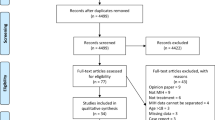Abstract
Objectives
This prospective longitudinal study aimed to evaluate if the occurrence of post-eruptive breakdown of demarcated opacities in hypomineralized teeth is influenced by the color or location of the opacity.
Materials and methods
Patients diagnosed with molar-incisor hypomineralization (MIH) between 2012 and 2014 were eligible. Two calibrated examiners performed the initial and follow-up evaluations according to European Academy of Paediatric Dentistry (EAPD) criteria. Sixty-five patients were included. Fifty-eight (89.2%), with a mean age of 8.8 years (SD: 1.4), were reassessed after 1 year. Two hundred and nine of 1155 tooth surfaces were considered for the study: 86 with white opacity (OP-W), 91 with yellow opacity (OP-Y), and 32 with enamel breakdown (EB).
Results
From the OP-W, OP-Y, and EB, 14, 27.5, and 46.9% worsened to breakdown exposing dentin, atypical restoration, or extraction (DB + RA or EXT), respectively. Yellow opacities tended to be more prone to breakdown than white opacities. The occurrence of EB, DB + AR, or EXT was not influenced by the location (p = 0.25).
Conclusions
The color of the opacity seems to play an important role on the occurrence of fracture and should be considered as a potential predictor.
Clinical relevance
Dentists should be aware that demarcated opacities related to MIH tend to fracture over time. Moreover, children with MIH should be seen at shorter intervals.
Similar content being viewed by others
References
Weerheijm KL, Jalevik B, Alaluusua S (2001) Molar-incisor hypomineralisation. Caries Res 35(5):390–391
Weerheijm KL, Duggal M, Mejare I, Papagiannoulis L, Koch G, Martens LC, Hallonsten AL (2003) Judgement criteria for molar incisor hypomineralisation (MIH) in epidemiologic studies: a summary of the European meeting on MIH held in Athens, 2003. Eur J Paediatr Dent 4(3):110–113
Fagrell TG, Dietz W, Jalevik B, Noren JG (2010) Chemical, mechanical and morphological properties of hypomineralized enamel of permanent first molars. Acta Odontol Scand 68(4):215–222. https://doi.org/10.3109/00016351003752395
Jalevik B, Dietz W, Noren JG (2005) Scanning electron micrograph analysis of hypomineralized enamel in permanent first molars. Int J Paediatr Dent 15(4):233–240. https://doi.org/10.1111/j.1365-263X.2005.00644.x
Farah R, Drummond B, Swain M, Williams S (2010) Linking the clinical presentation of molar-incisor hypomineralisation to its mineral density. Int J Paediatr Dent 20(5):353–360. https://doi.org/10.1111/j.1365-263X.2010.01061.x
Jalevik B, Noren JG (2000) Enamel hypomineralization of permanent first molars: a morphological study and survey of possible aetiological factors. Int J Paediatr Dent 10(4):278–289
Da Costa-Silva CM, Ambrosano GM, Jeremias F, De Souza JF, Mialhe FL (2011) Increase in severity of molar-incisor hypomineralization and its relationship with the colour of enamel opacity: a prospective cohort study. Int J Paediatr Dent 21(5):333–341. https://doi.org/10.1111/j.1365-263X.2011.01128.x
Bullio Fragelli CM, Jeremias F, Feltrin de Souza J, Paschoal MA, de Cassia Loiola Cordeiro R, Santos-Pinto L (2015) Longitudinal evaluation of the structural integrity of teeth affected by molar incisor hypomineralisation. Caries Res 49(4):378–383. https://doi.org/10.1159/000380858
Weerheijm KL (2003) Molar incisor hypomineralisation (MIH). Eur J Paediatr Dent 4(3):114–120
Lygidakis NA, Wong F, Jalevik B, Vierrou AM, Alaluusua S, Espelid I (2010) Best Clinical Practice Guidance for clinicians dealing with children presenting with Molar-Incisor-Hypomineralisation (MIH): an EAPD policy document. Eur Arch Paediatr Dent 11(2):75–81
da Costa-Silva CM, Jeremias F, de Souza JF, Cordeiro Rde C, Santos-Pinto L, Zuanon AC (2010) Molar incisor hypomineralization: prevalence, severity and clinical consequences in Brazilian children. Int J Paediatr Dent 20(6):426–434. https://doi.org/10.1111/j.1365-263X.2010.01097.x
Fragelli CM, Souza JF, Jeremias F, Cordeiro Rde C, Santos-Pinto L (2015) Molar incisor hypomineralization (MIH): conservative treatment management to restore affected teeth. Braz Oral Res 29:1–7. https://doi.org/10.1590/1807-3107BOR-2015.vol29.0076
Mahoney EK, Rohanizadeh R, Ismail FS, Kilpatrick NM, Swain MV (2004) Mechanical properties and microstructure of hypomineralised enamel of permanent teeth. Biomaterials 25(20):5091–5100. https://doi.org/10.1016/j.biomaterials.2004.02.044
Xie Z, Kilpatrick NM, Swain MV, Munroe PR, Hoffman M (2008) Transmission electron microscope characterisation of molar-incisor-hypomineralisation. J Mater Sci Mater Med 19(10):3187–3192. https://doi.org/10.1007/s10856-008-3441-2
Elfrink ME, ten Cate JM, van Ruijven LJ, Veerkamp JS (2013) Mineral content in teeth with Deciduous Molar Hypomineralisation (DMH). J Dent 41(11):974–978. https://doi.org/10.1016/j.jdent.2013.08.024
William V, Messer LB, Burrow MF (2006) Molar incisor hypomineralization: review and recommendations for clinical management. Pediatr Dent 28(3):224–232
Crombie FA, Cochrane NJ, Manton DJ, Palamara JE, Reynolds EC (2013) Mineralisation of developmentally hypomineralised human enamel in vitro. Caries Res 47(3):259–263. https://doi.org/10.1159/000346134
Jalevik B, Klingberg GA (2002) Dental treatment, dental fear and behaviour management problems in children with severe enamel hypomineralization of their permanent first molars. Int J Paediatr Dent 12(1):24–32
Fayle SA (2003) Molar incisor hypomineralisation: restorative management. Eur J Paediatr Dent 4(3):121–126
Kotsanos N, Kaklamanos EG, Arapostathis K (2005) Treatment management of first permanent molars in children with Molar-Incisor Hypomineralisation. Eur J Paediatr Dent 6(4):179–184
Funding
This study is supported by CAPES, Coordenação de Aperfeiçoamento de Pessoal de Nível Superior.
Author information
Authors and Affiliations
Corresponding author
Ethics declarations
Conflict of interest
The authors declare that they have no conflict of interest.
Ethical approval
All procedures performed in studies involving human participants were in accordance with the ethical standards of the institutional and/or national research committee and with the 1964 Helsinki Declaration and its later amendments or comparable ethical standards.
Informed consent
Informed consent was obtained from all individual participants included in the study.
Rights and permissions
About this article
Cite this article
Neves, A.B., Americano, G.C.A., Soares, D.V. et al. Breakdown of demarcated opacities related to molar-incisor hypomineralization: a longitudinal study. Clin Oral Invest 23, 611–615 (2019). https://doi.org/10.1007/s00784-018-2479-x
Received:
Accepted:
Published:
Issue Date:
DOI: https://doi.org/10.1007/s00784-018-2479-x




